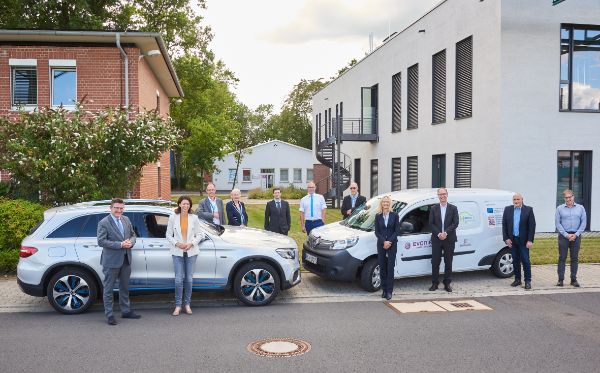In the fight against high CO2 emissions and thus global warming, the possibility of producing green hydrogen, known as water electrolysis, plays a key role. This requires a strategy for sustainable sourcing as well as technologies for the efficient use of expensive raw materials such as iridium and platinum. These are indispensable as catalysts for Proton Exchange Membrane (PEM) electrolysis. PEM electrolysis can cope well with fluctuations in the amount of electricity from solar or wind power and is the most promising electrolysis technology for the production of green hydrogen.

The German and European hydrogen strategies do not yet sufficiently consider raw material requirements for the production and use of hydrogen. However, science and industry experts have already recognized this: Heraeus reduces the use of iridium and platinum with each new generation of catalysts. The latest catalyst generation reduces the iridium requirement by almost 85% while achieving three times the performance. However, further technological research and targeted funding are necessary to realize the goals set out in the hydrogen strategy.
With several relevant local companies and institutes, Hanau bundles considerable material expertise in hydrogen and fuel cell technology. With further support, the existing research and production capacities can form the nucleus for expansion into a powerful cluster.
In the dialog with Kaufmann, Dr. Christian Gebauer, Head of Innovation Hydrogen Systems at Heraeus, outlined the measures necessary to realize the ramp-up with green hydrogen:
- Greater incorporation of the expertise of manufacturers of critical components for H2 ramp-up.
- Expansion of research for low-loaded iridium catalysts
- Expansion of research for iridium recycling
- Tie public support for PEM plants to efficient use of iridium
"Today's exchange was a good starting point for a deeper dialogue between politics and industry." said Christian Gebauer after the exchange. "We are available to politics with our knowledge for the development of strategies and concepts!"
Background on Proton Exchange Membrane (PEM) electrolysis
PEM electrolysis is a special technology for the production of hydrogen. Iridium catalysts play a key role in this process. They accelerate the otherwise slow process of oxygen evolution and thus the more efficient production of hydrogen.
In addition, PEM electrolysis is particularly dynamic compared to other technologies. This is important for the use of wind and solar power, where the amounts of electricity fluctuate greatly. PEM electrolysis can be used at a wide range of power levels and is therefore particularly suitable for the production of green hydrogen.
Heraeus is continuously researching the development of new catalysts for PEM electrolysers and has achieved an initial breakthrough with the latest generation of catalysts to support the ramp-up of PEM electrolysis.
The German and European hydrogen strategies do not yet include a raw materials strategy. However, this will be necessary in order to achieve the goals that have been set.
Heraeus believes in green hydrogen as the energy carrier of the future. We want to help keep investment costs for new sustainable hydrogen projects low, increase planning security for all parties involved, and ensure nationwide scaling.
